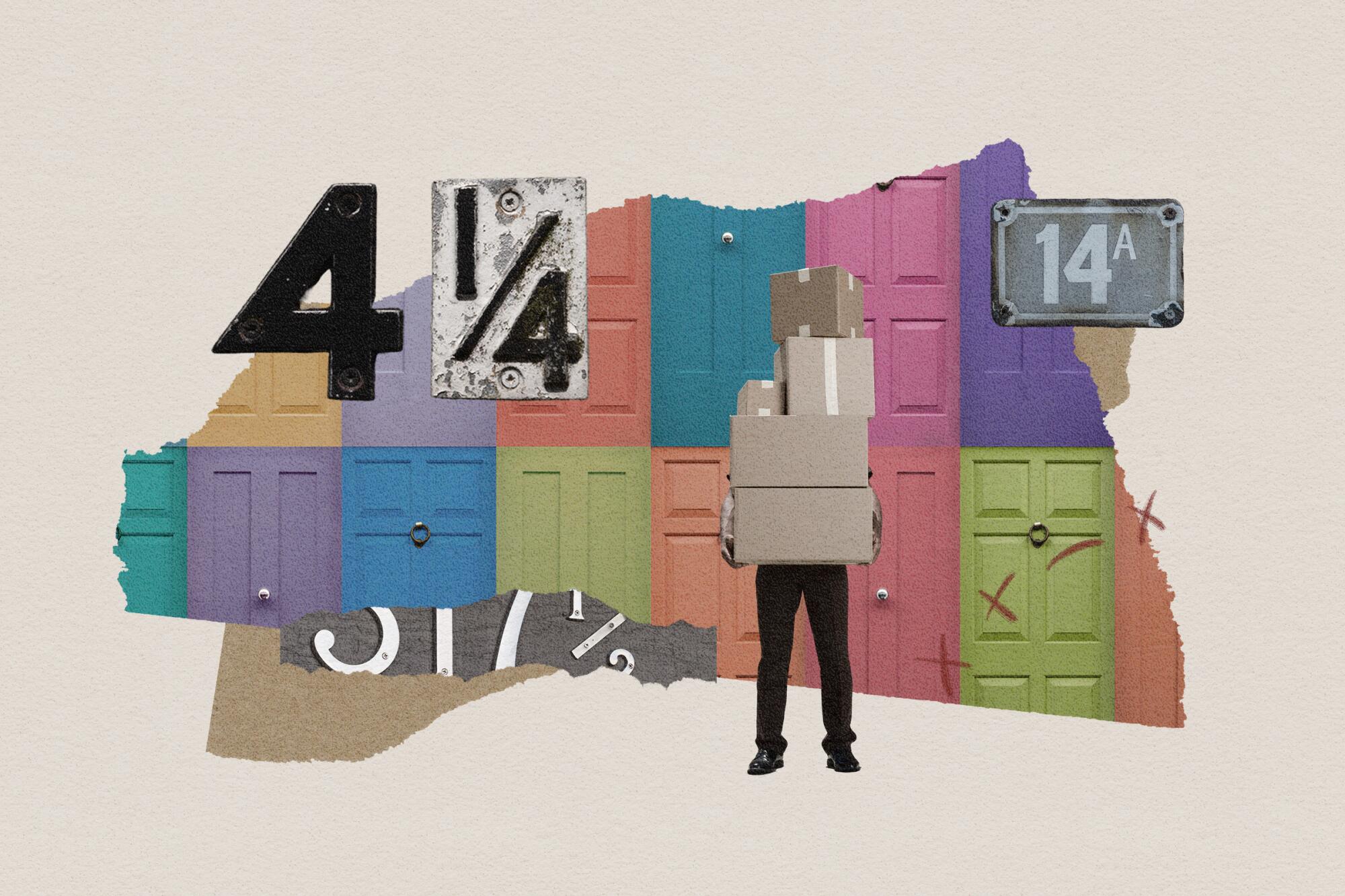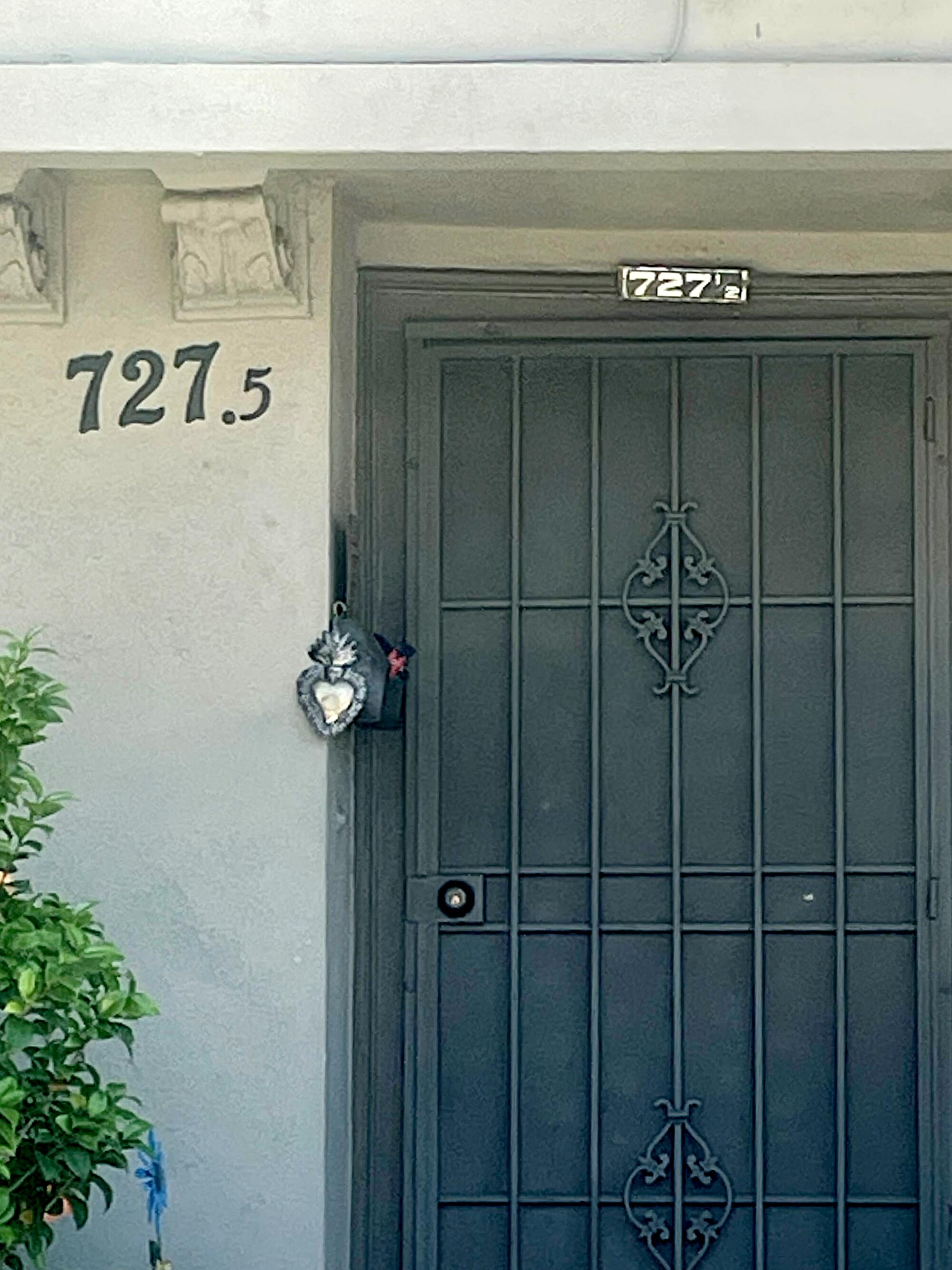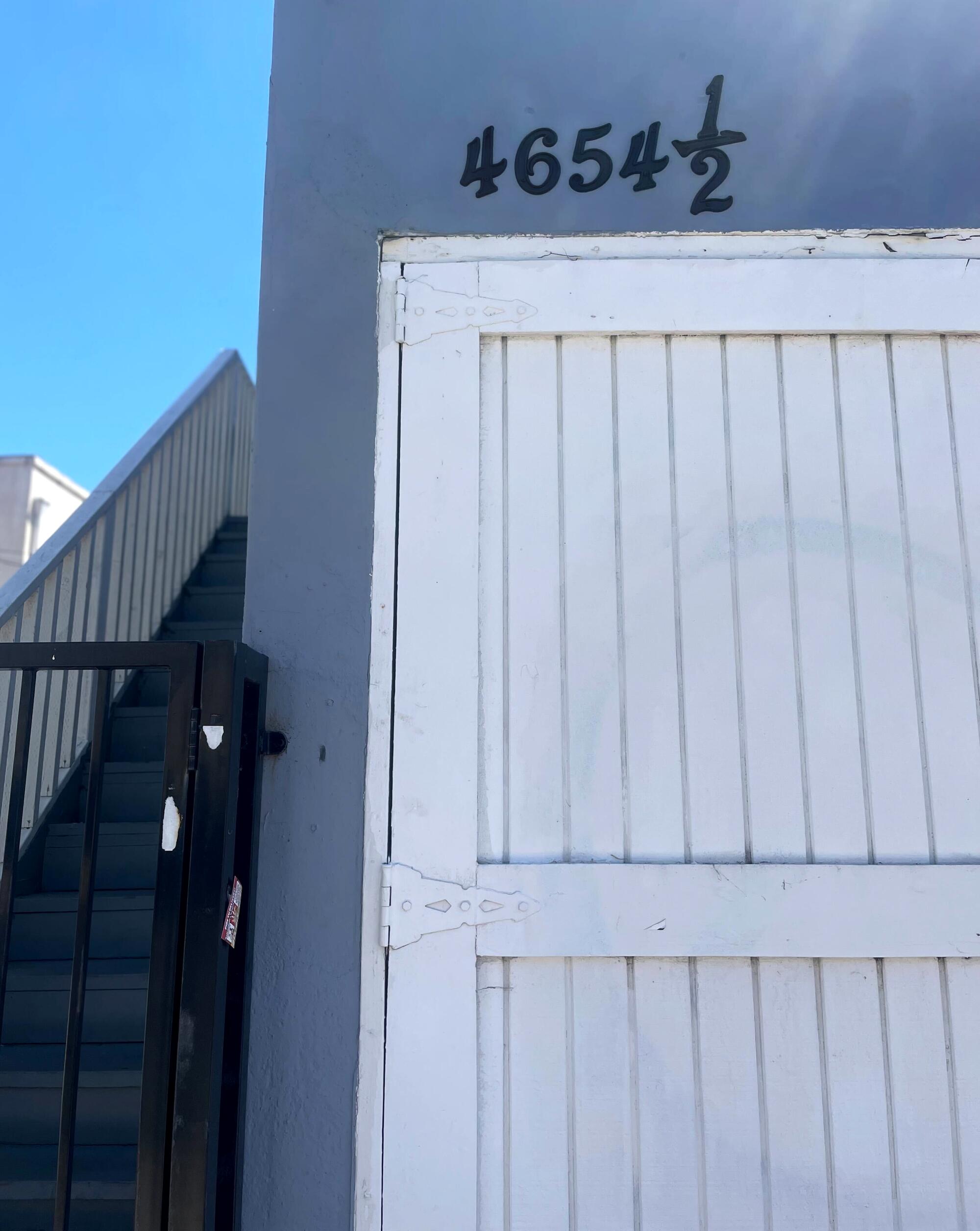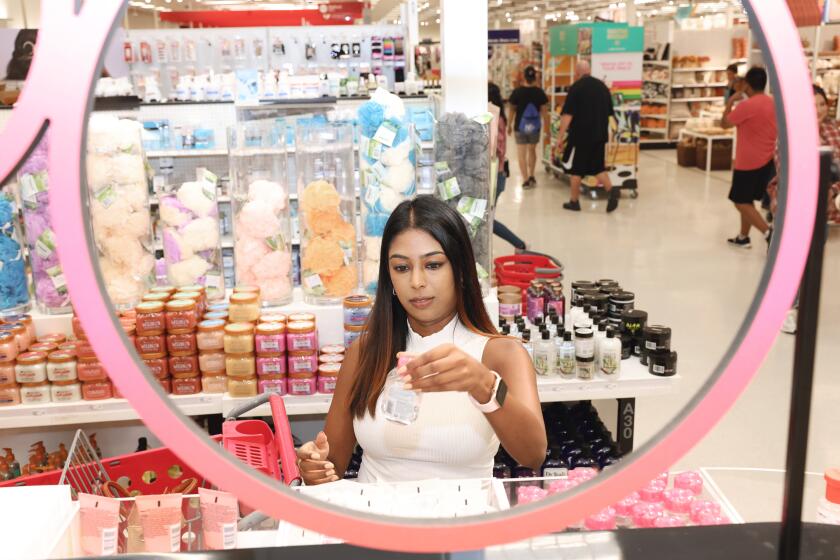
- Share via
Casey Hogan had no idea her new address would be so frustrating.
But soon after moving into a granny flat in Van Nuys three years ago, she realized that the fraction in her house number — think: 101 ½ Main St. — was going to be particularly inconvenient in an era of constant deliveries.
Her packages get marked as “address not deliverable” or dropped off at the wrong door. Retail websites that are programmed to reject special characters, including the fraction’s slash, sometimes refuse her shipping address or auto-correct it to another location.
She has tried workarounds to this quirk of Los Angeles geography — most common in dense neighborhoods with duplexes or, as in Hogan’s case, at accessory dwelling units built on preexisting properties. Spelling out the fraction as “one half” has helped, but about a quarter of her packages or food deliveries arrive late or get dropped at someone else’s house.
In the case of a particularly urgent order before a flight, she had Amazon deliver a dog carrier to her mother’s home in Oceanside and drove there to pick it up instead of risking a snafu at her place.
“It’s still a nightmare,” said Hogan, 32, who works as a medical scribe. “Anything that could go wrong has gone wrong.”
In the increasingly deliverable world shaped by consumers’ skyrocketing, post-pandemic expectations that almost anything they want or need should arrive quickly and seamlessly at their doorstep, residents at more than 60,000 Los Angeles addresses like Hogan’s have been left on the sidelines. (Or really, left standing on their stoops, searching endlessly for packages.)
The shared inconvenience grew into a community on Reddit, where people swap tips, such as entering the address as a decimal — 101.5 Main Street — or spelling it out as Hogan does. One person made a more drastic suggestion: “Break down and get a P.O. box.”
Dealing with fractional addresses and other tricky deliveries, such as those behind gates, is equally frustrating — and costly — for retailers, logistics experts said, as well as for shipping companies that move more than 58 million packages a day in the United States.
The average American received about 70% more packages in 2022 than in 2017, according to a Capital One shopping research report. And a recent survey of 300 retail executives by the location data company Loqate found that almost 8% of first-time deliveries in the U.S. failed, costing about $17 per failed order — or roughly $200,000 a year.

“They have to deal with such a large amount of packages,” said Blake Droesch, a senior analyst at eMarketer who studies last-mile delivery. “This is not the post office of yore, where you could get an address half right, and the mailman will spend half the day trying to figure out who this letter belongs to.”
Since demand for deliveries spiked early in the pandemic, Droesch noted, there has been a significant shift in what people buy online, from items like new shoes or a laptop — things people didn’t mind waiting a few days to receive — to hygiene products and home essentials needed quickly.
“If you run out of deodorant,” he said, “you kind of need that the next day.”
Ram Bala, an associate professor of business analytics at Santa Clara University, studies the supply chain and is involved in a startup that will use generative artificial intelligence to improve shipping logistics.
If 2023 was the year AI broke into the mainstream, 2024 will almost certainly bring a whole new slate of developments. We asked several experts what we can expect.
Bala said it’s often odd little problems that sound simple to solve — in this case, figuring out how to accommodate fractional addresses — that end up being the trickiest.
“Anytime you try to fix that problem, there are unintended consequences somewhere else,” he said. “It’s a trade-off.”
Retailers don’t appear to be prioritizing a fix for people with fractional addresses, since doing so would require removing rigid formatting parameters built into software to ensure that normal addresses get entered correctly, Bala said.
In Los Angeles, which has about 1 million residential addresses, the roughly 60,700 fractionals are relative rarities. They’re concentrated in densely populated neighborhoods such as Boyle Heights, East Hollywood and Pico-Union, according to the city’s Bureau of Engineering, which oversees the handling of address numbers.
“The use of fractional numbers is discouraged and should only be used as a last resort,” a primer on the bureau’s website says.
A spokesperson for the city said the reticence to assign fractional addresses — which are often, but not always, ½ stems from conversations with residents worried about not only confusing delivery drivers and visitors but the effect on property values. Still, it’s sometimes the best alternative when squeezing new units between existing ones.
The phenomenon isn’t unique to L.A.

Pockets of other big cities where large, historic buildings were divided into smaller dwellings, such as New York and Philadelphia, also have fractional addresses. And in an even more complicated twist detailed in a piece by Colorado Public Radio, the city of Grand Junction, Colo., has fractions in its street names, creating perplexing intersections such as C ½ and 28 ¾ roads.
Despite the delivery headaches, fractional addresses can carry a whimsical charm, often drawing comparisons to Platform 9 ¾, the fictional London train stop where students in the Harry Potter series caught the Hogwarts Express.
But for Juan Crespo, who started the Reddit thread asking for tips about living at a fractional address, it was more annoying than alluring.
Before moving into a unit in a Highland Park quadplex in 2021, the 32-year-old research scientist tried to change his shipping address with online retailers he used frequently, including Southwest Airlines and Target, where he and his spouse had created their wedding registry.
But the sites kept rejecting the slash.
He eventually called and, after a wait, got a Target employee to manually add the “½” to his address; by then, he said, several gifts, including a $300 stand mixer, had already been sent.
Roaming the aisles of Target has become a form of self-care for some people, especially young women — a trend the retailer has amplified on social media and profited by.
When ordering from DoorDash and Uber Eats, he said, his address would often be automatically switched to a different location a few blocks up, requiring him to enter a neighbor’s address instead.
“It was just a pain,” said Crespo, who has since relocated to Michigan and settled into a home with a full address number. “I’m glad we don’t have to deal with that anymore.”
For Hogan, who lives in the ADU in Van Nuys, the annoyance remains.
A few months ago, she posted to an online help forum, asking Google to have her fractional address added to Google Maps, since many retailers use the company’s mapping software to handle shipping logistics, and a problem there can create a ripple effect of issues on other sites.
“I have to resort to entering my neighbor’s address and hoping I can intercept the delivery person,” Hogan wrote. “HELP!”
A member of Google’s Product Experts Program, a group of volunteers who answer questions in exchange for perks from the company, quickly responded to Hogan saying that only an employee can add an address with a slash to the map. A volunteer asked her to upload a photo of her driver’s license or utility bill showing her address, but Hogan felt uncomfortable doing so and abandoned the effort.
She can easily rattle off a list of packages that never arrived or were initially dropped off somewhere else: workout clothes, two pairs of shoes from Nike, a showerhead from Jolie Skin Co. And she has gotten used to filing claims with shipping companies after getting notifications with pictures showing packages left in unfamiliar doorways. She bought a Ring doorbell camera and enabled the package notification feature, so she has proof that a delivery never arrived.
So many of her food deliveries got messed up, she said, that she set up a rack outside her gate with a sign that reads, “Leave food here.”
These days, she prefers to shop in person whenever possible and thinks twice before buying anything online — a hesitance, she admits with a laugh, that comes with a silver lining.
“I guess it does save me money.”
More to Read
Inside the business of entertainment
The Wide Shot brings you news, analysis and insights on everything from streaming wars to production — and what it all means for the future.
You may occasionally receive promotional content from the Los Angeles Times.













